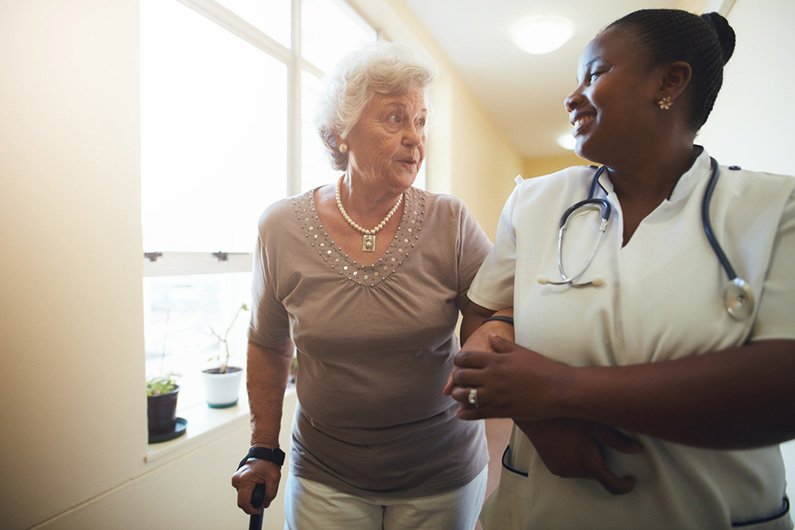In mid-February, a cluster of residents at the Seattle-area nursing home, Life Care Center of Kirkland, came down with a respiratory illness and fever. On February 28, a 73-year-old female resident tested positive for coronavirus disease (COVID-19). Over the next month, the coronavirus swept through the 130-resident facility, killing 37 people connected with it.
A subsequent Centers for Disease Control and Prevention (CDC) investigation identified two main contributors to the virus’s rapid spread through the Kirkland nursing home. One of them was “limitations in effective infection control and prevention” and the other was “staff members working in multiple facilities.” CDC’s survey of some 100 nearby long-term care facilities found that staff members who worked in more than one facility and/or who worked while sick were among the leading contributors to the facilities’ vulnerability to infection.
Working at more than one facility is a common practice among nursing home workers throughout the country. “Staff members work in multiple facilities because they do not earn enough money at one facility to support themselves and their families,” says the Center for Medicare Advocacy (CMA).
The Paraprofessional Healthcare Institute reported in 2016 that nurse aides, who provide most of the direct care in nursing facilities, earn “near-poverty wages.” The median salary at that time was $19,000 a year, with half of workers earning less. More than a third of them (38 percent) relied on various public benefits, including Medicaid, food stamps, housing subsidies and cash assistance.
When it comes to the spread of infections, low wages are especially dangerous because many of these workers lack paid sick leave. CMA notes that given their low incomes, many employees work sick. “If they do not work,” CMA says, “they do not get paid. With low wages, most lack enough savings to fall back on if they are sick and not paid.”
At this point, more than 400 of the nation’s 15,000 nursing facilities have had an outbreak of coronavirus among residents, staff or both, and “[t]here are indications . . . that those reports dramatically understate the situation,” long-term care expert Howard Gleckman writes in Forbes. As of April 2, the Associated Press estimated that “at least 450 deaths and nearly 2,300 infections have been linked to coronavirus outbreaks in nursing homes and long-term care facilities nationwide.”
“The coronavirus pandemic,” the CMA said in a recent article on its site, “brings dramatically into view the problem of allowing facilities to pay workers inadequate wages and to give them inadequate benefits.”
Terming the issue “a national scandal, calling for a national solution,” CMA makes a number of recommendations for raising the wages of nursing home workers and ending what it calls “hidden public subsidies to the nursing home industry” through public assistance paid to its low-wage workers.
CMA suggests that reforms be modeled on legislation introduced but not yet passed in Pennsylvania, the Nursing Home Accountability Act. Among other things, the Act would guarantee nursing home workers a base hourly wage of $15 an hour, require nursing facilities to provide information to the public on the wages paid to its employees, and have facilities pay an “employer responsibility penalty” for employees who receive public assistance.
CMA is also calling for mandatory paid sick leave policies enacted in the wake of the coronavirus pandemic to be made universal and permanent.
Contact the law offices of R. F. Meyer & Associates for help with any of your Estate Planning, Probate or Elder Law matters. Call us at 614-407-7900, send email to [email protected], or just fill out the contact form at ElderLaw.US/Contact.
